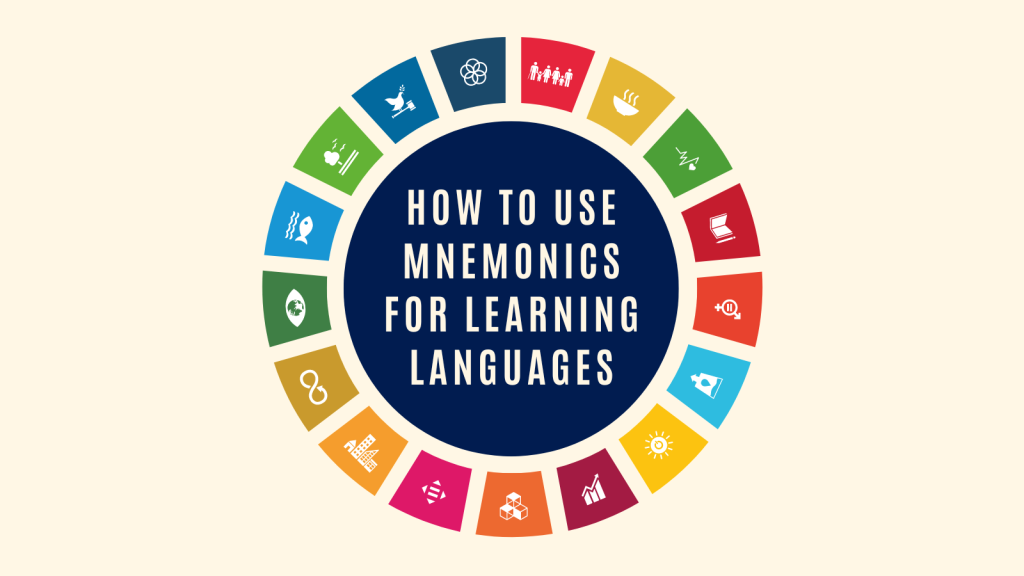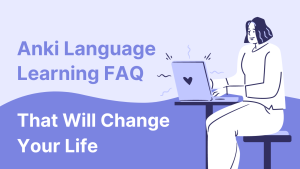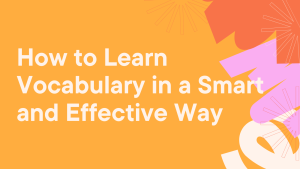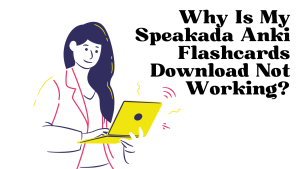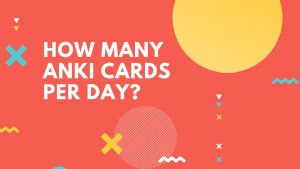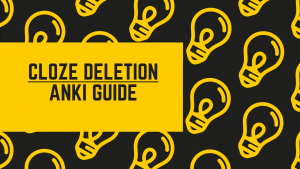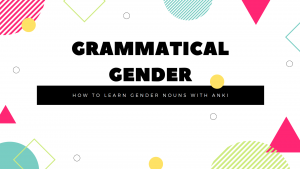How to Use Mnemonics for Learning Languages
Mnemonics are memory techniques that hold immense potential for language learners. Whether you’re tackling vocabulary, grammar rules, or pronunciation, incorporating mnemonics for learning a language into your study routine, mnemonics can greatly boost retention and make the learning process more enjoyable.
In this article, we will delve into the world of mnemonics, their benefits, and provide practical examples. Furthermore, we will guide you on how to seamlessly integrate mnemonic information into Anki flashcards, including Speakada’s Anki flashcards for language learning.
What Are Mnemonics?
Mnemonics are memory aids that help us retain information by associating it with easily memorable cues. These cues can be in the form of vivid mental images, rhymes, acronyms, or stories.
By creating unique and memorable connections, mnemonics make it easier for our brains to recall and retrieve information when needed.
Benefits of Mnemonics in Language Learning:
Improved Retention:
Mnemonics provide hooks for memory, making it easier to remember and recall language-related information, such as vocabulary words, grammar rules, and pronunciation patterns.
Enhanced Creativity:
Developing mnemonics encourages creativity and imagination, allowing you to personalize your learning experience and make it more engaging.
Deeper Associations:
Mnemonics create strong mental connections between new knowledge and existing knowledge, facilitating a deeper understanding of language concepts.
Long-Term Recall:
Mnemonic techniques promote long-term memory retention by encoding information in a way that is more likely to be stored and recalled effectively.
Examples of Mnemonics:
Acronyms:
Create an acronym using the first letter of each word or phrase you want to remember. If you are learning Spanish, and you want to distinguish between the verbs “ser” (to be) and “estar” (to be), you can use the acronym “DOCTOR” and “PLACE” respectively. Each letter stands for a characteristic or usage of the verb. For example:
- DOCTOR: D (description), O (occupation), C (characteristic), T (time), O (origin), R (relationship)
- PLACE: P (position), L (location), A (action), C (condition), E (emotion)
Visualization:
Form mental images to represent words or phrases. For example, to remember the Italian word “cane” (dog), visualize a playful dog wagging its tail and barking happily.
Color Association:
Assign specific colors to aid in memorizing certain language concepts. In German, you can use colors to remember grammatical gender. Associate gray with neuter nouns, blue with masculine nouns, and red with feminine nouns. For example, imagine a gray book (das Buch) for neuter, a blue car (der Wagen) for masculine, and a red rose (die Rose) for feminine. The colors provide visual cues that help reinforce the correct gender for each word.
Songs and Rhymes
Create rhymes or songs to remember patterns or rules. For instance, to memorize verb conjugations in French, you could use a catchy rhyme like “Je chante, tu chantes, il chante” (I sing, you sing, he sings). This way, the rhythm and melody of the rhyme can aid in recalling the conjugation patterns.
These mnemonic techniques provide engaging and creative ways to reinforce language learning. Experiment with different mnemonic strategies and find the ones that work best for you.
Remember, personalization and creativity are key when utilizing mnemonics to enhance your language acquisition journey.
Maximizing Memory Recall: Combining Anki and Mnemonics for Learning a Language
Anki is already an effective tool for language learning on its own, utilizing its spaced repetition system to optimize review intervals based on your performance. However, there may be times when you encounter difficulties memorizing certain flashcards or need extra assistance with specific aspects, such as grammatical gender. This is where incorporating mnemonics into your Anki flashcards can be especially helpful.
By integrating mnemonic techniques with Anki’s spaced repetition system, you create a powerful combination that significantly enhances memory retention. Mnemonic cues, such as vivid mental images or associations, reinforce the memory associations in your long-term memory. Anki’s spaced repetition ensures that these mnemonic-based flashcards are reviewed at optimal intervals, further strengthening your memory recall.
While adding mnemonics to your Anki flashcards is optional, it can provide valuable support when you encounter challenges or wish to reinforce specific language aspects. It offers an opportunity for accelerated progress, improved memory recall, and a more enjoyable language learning journey. Experiment with incorporating mnemonics into your Anki study routine and discover the benefits they can bring to your language acquisition efforts.
Adding Mnemonic Information to Anki Flashcards:
Text-Based Mnemonics: In Anki, you can add mnemonic information directly to the front or back of your flashcards. Describe the mnemonic technique or include memorable phrases, acronyms, or associations that aid in memory recall. Be concise, ensuring the mnemonic information is clear and easy to understand.
Color-Based Mnemonics: Mnemonics that use colors can be easily incorporated into Anki flashcards to enhance language learning. One way to do this is by changing the font colors or adding a picture of a color for certain words in Anki. This helps you include a color association alongside the word or phrase being learned. For example, for German vocabulary, you can add the color gray for neuter nouns, blue for masculine nouns, and red for feminine nouns to reinforce their respective genders. This visual cue will strengthen memory recall and aid in accurately recalling grammatical genders during language practice.
Picture-Based Mnemonics: To include image-based mnemonics, you can add photos or images to the front or back of your Anki flashcards. Find or create images that represent the mnemonic cues. For example, if you’re learning the word “pomme” (apple) in French, you can attach an image of a bright red apple to the flashcard.
Using Speakada’s Anki Flashcards: Speakada’s pre-made Anki flashcards at www.speakada.com often come with mnemonic information already incorporated, such as color associations and images. You can also customize our Speakada Anki flashcards to enhance or personalize the flashcards. For instance, you can modify the front or back of our Speakada flashcards to include your own mnemonic associations or visual cues.
Mnemonics and Anki: The Dynamic Duo for Language Learning Success
Mnemonics for learning languages are a powerful tool leveraging memory techniques to help with retention. Incorporating mnemonics into your Anki flashcards, including Speakada’s Anki flashcards, can significantly improve your retention and make learning more enjoyable.
Experiment with various mnemonic techniques, whether through text-based associations or picture-based cues, to create stronger mental connections. Embrace the creative side of language learning and unlock the potential of mnemonics to accelerate your progress and achieve language fluency.
Reach Out to Speakada for Expert Anki Support
If you have any questions or need further assistance, don’t hesitate to contact the Speakada team at [email protected]
Our team consists of Anki and language learning experts who are here to help you. We have carefully designed our pre-made decks available on www.speakada.com with built-in mnemonics, including images and colors, to enhance your language learning experience.
We understand the importance of personalization, as our team members also personally use Anki flashcards to learn languages. We often add our own mnemonics, such as including names or photos of family members to learn specific words. Connect with us and let our expertise and passion for language learning support you on your journey to fluency.
